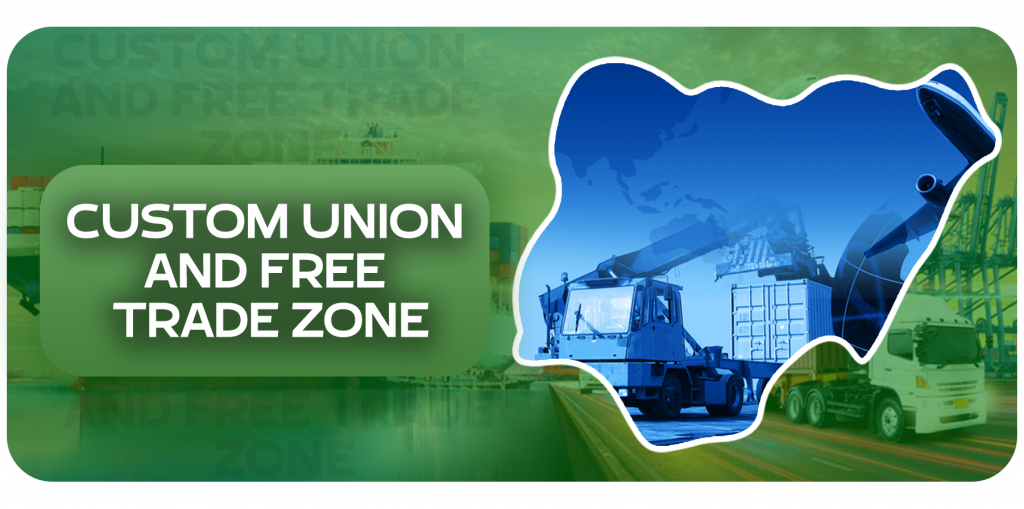Trading is an integral part of the daily activities of the global community. Africa, as an emerging investment destination and a key market for goods and services, is not exempt from the act of trading. Recently, we as a business have met one or two persons seeking to understand the difference (if any) between a Custom Union such as the European Union and a Free Trade Zone such as the African Continental Free Trade Area.
In this article, we would delve into what a Custom Union and a Free Trade Zone entails.
CUSTOM UNION
A Custom Union is an agreement between two or more neighbouring countries with the aim of removing trade barriers, custom duties, and eliminate quotas. For a Custom Union, a fixed external tariff is imposed on non-members of the union. When countries outside the union trade with countries in the Custom Union, they are required to make a single payment for the goods that have crossed the border. Once within the union, they can trade freely with no added tariffs.
Custom Union offers benefits such as the creation of a common market, monetary union, and better economic integration, it also leads to trade creation where the more trade-efficient members of the Union sells to the lesser trade-efficient members which leads to better allocation of resources and trade diversion where the trade-efficient non-members sells fewer goods to members due to the external tariffs in place which in turn gives trade-efficient countries in the union the opportunity to capitalize on their position and sell goods within the union. It also helps avoid a tariff differential situation.
There are also certain setbacks to a Custom Union such as countries losing their economic power and the presence of an unfair distribution of tariff generated revenue as one country might seem to be trading more than another. Another disadvantage is imbedded in the costliness and time-consuming nature of setting tariffs.
FREE TRADE ZONE
A Free Trade area is a region in which a group of countries that have signed a Free Trade agreement maintain little or no barriers to trade between each member country. A Free Trade agreement is entered into by two or more countries with the goal of achieving economic cooperation and agreeing on the terms of trading between the parties involved. In the agreement, member countries specifically identify the duties and tariffs that are to be imposed on other member countries on matters of imports and exports.
The main advantage of a Free Trade area is that it encourages competition which in turn leads to efficiency and maximization of resources. When there is competition, prices tend to fall which gives consumers an increased buying power, which improves their accessibility to a variety of products. Also, when a free trade agreement culminates in the removal of tariffs and quotas, more players tend to enter the market which removes monopoly.
Regardless of the advantages created by the Free Trade Zone, it also has complementary disadvantages which includes; imitation and underselling of products by domestic producers unless the Free Trade Area (FTA) makes provision for intellectual property law and enforces the law. Another disadvantage is the reduced import-tax revenue generated by member countries.
The main similarity between the free trade area and customs union is seen in the reduction/elimination of restrictions on trade among member countries. While the major difference between the two agreements is that in a customs union, participating countries set a common customs tariff (a single external tariff applied by all members) against third (non-member) countries, while in the former, they do not. Another difference is that in a Custom Union agreement, participating countries set tariffs as a single body while members in the free trade zone can bargain individually.
The African Continental Free Trade Area (AFCFTA) is one of the largest trade zones in Africa comprising of 54 African countries and is said to connect almost 1.3 billion people with a potential combined gross profit of $3.5 trillion. The AFCFTA aims to reduce tariffs among members and cover policy areas such as trade facilitation and services as well as regulatory measures such as technical barriers to trade. The main purpose of the AFCFTA is to reshape the African market and economies across the continent and boost the transportation, manufacturing, and natural resources sector.
While the AFCFTA will help reshape and boost the economy, tapping into its potential is dependent on the preparedness of each member country and how well they can adjust to this new policy. Considering factors like manufacturing capacity, firm productivity, infrastructural capacity, domestic cost of doing business as well as access to loans and financing, some countries will benefit from this agreement while others may not.
Nigeria, the largest economy in Africa, under the AFCFTA, has access to goods and services at an affordable price. With a population of over 200 million, the market size allows Nigeria to further expand into other African countries. This also means that investors will not only benefit from the Nigerian market but also from other African markets.
Furthermore, for a business to expand successfully, it will need a distribution network for goods to be efficiently delivered to the market. This will give rise to investment in distribution and supply which will cater for the improvement in transport infrastructure. The expansion of the market size will then give rise to job opportunities.
In conclusion, the Custom Union and Free Trade Area similarly possess their benefits and challenges.
Reference(s)
- “FTAs and Customs Unions: For understanding Brexit”. Research Institute of Economy, Trade and Industry, accessed 3rd July 2022.
- “Nigeria: AfCFTA And Trade Benefits To Nigeria”. Mondaq, accessed 3rd July 2022.
- “Quantifying the impact on Nigeria of the African Continental Free Trade Area”. Brookings, accessed 4th July 2022.
